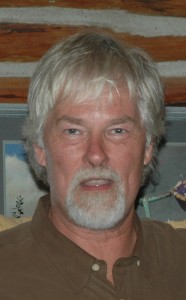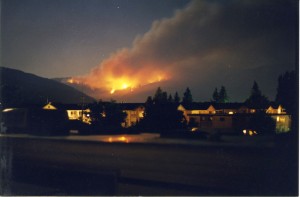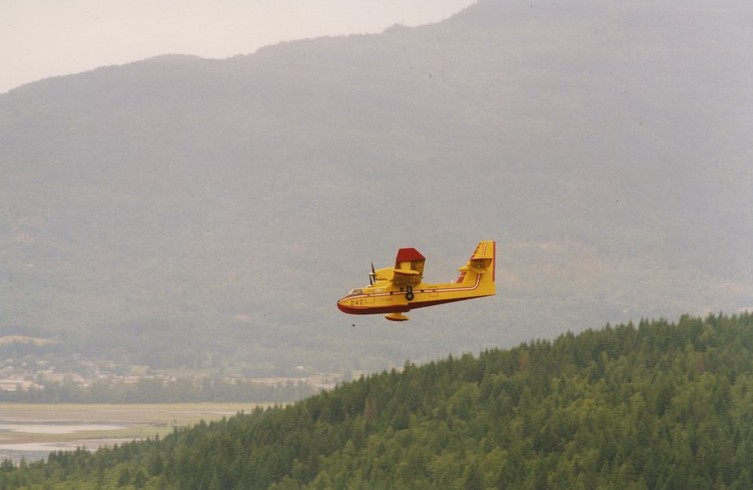Who has the Emergency Operations Manual?

1. Geoff Power was the Emergency Operations Centre Manager. The plan was untested. No one had any experience. . . “We were lucky. . .”
Late in the afternoon a lightning strike was observed mid-week, late July. I didn’t see the strike, but I remember hot, dry days and smoke from a small fire on the hills. That was before the winds.
I worked for the Columbia Shuswap Regional District as the Manager of Development Services (CSRD). My duties included emergency management but on the day of the strike I was blissfully ignorant of its significance.
My responsibilities at the CSRD included reworking the emergency management function to include planning and resource documents and lots of practical exercises but when the fire struck we had barely begun. So, without a practiced plan and with no previous experience, we watched with horror as the winds of early August turned the valley into a war zone.
I survived the role of Emergency Operations Centre Manager largely due to expert EOC and risk management consultant advice coupled with tireless local expertise and commitment. I felt that we had an exceptional team in the EOC and in the supporting Emergency Social Services group. The local response to the emergency had relieved the Ministry of Forests of the task of evacuation leaving it to fight the fire. The newly drafted Incident Command System proposed by the Province was tested and refined during the event. We all had a vertical learning curve.
I have many memories; some technical, some emotional.
On the technical side, I think that I was told that our rank 6 fire had an energy value of 220,000 kilowatts per metre of flame front on the day that it rushed downhill and the particulate column bridged the Salmon Valley. It was the energy release of a small nuclear explosion in slow motion.
I remember being angry with the boaters who thought it wise to crowd the loading water bombers. In a frustrated moment I felt that one overhead load release could solve the problem but reality soon prevailed and calmer measures were sought.
One day, during a fire behavior debriefing, the technician, a good-looking young woman, was given a T-shirt with “FIRE SPICE” written on it. We thought that her older, male co-worker should also get a shirt with “OLD SPICE” on it. The next day I was given one with “TYPE ‘A’ SPICE” on it but I wasn’t sure what the reference really meant never having taken a personality test. Later that night, after a long shift, I looked up and completed such a test only to find out that I was an extreme type A personality, something that my EOC colleagues already knew.
I remember that we were lucky. I remember with great relief that the winds of August 10th did not push the fire into town. I remember that no one was hurt despite the fact that structural firefighters, forest firefighters and military personnel often speak different operational languages. I remember all the help that we had and being thankful that other communities were not similarly affected and competing for limited resources.
Geoff Power, CSRD
Photo credit in order of appearance:
1. Jody Power, c. 2014
2. Gordon Pelletier, c. 1998
3. James Murray, Salmon Arm Observer, c. 1998



